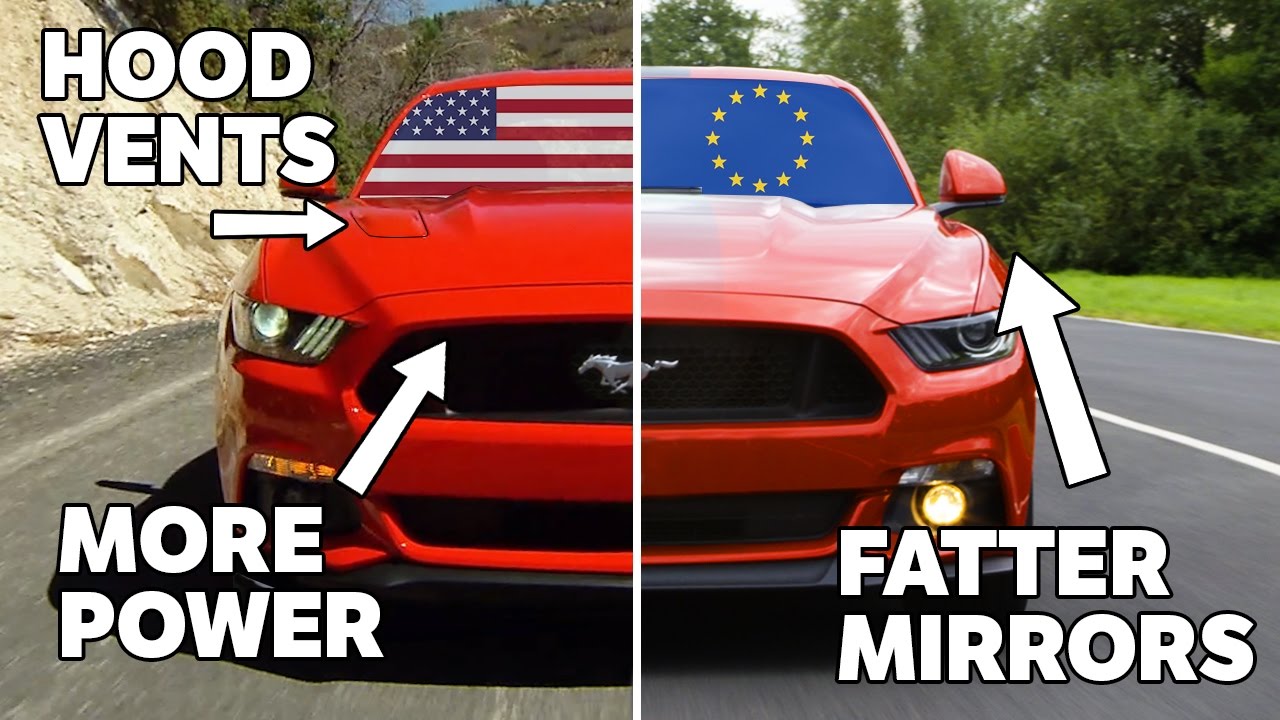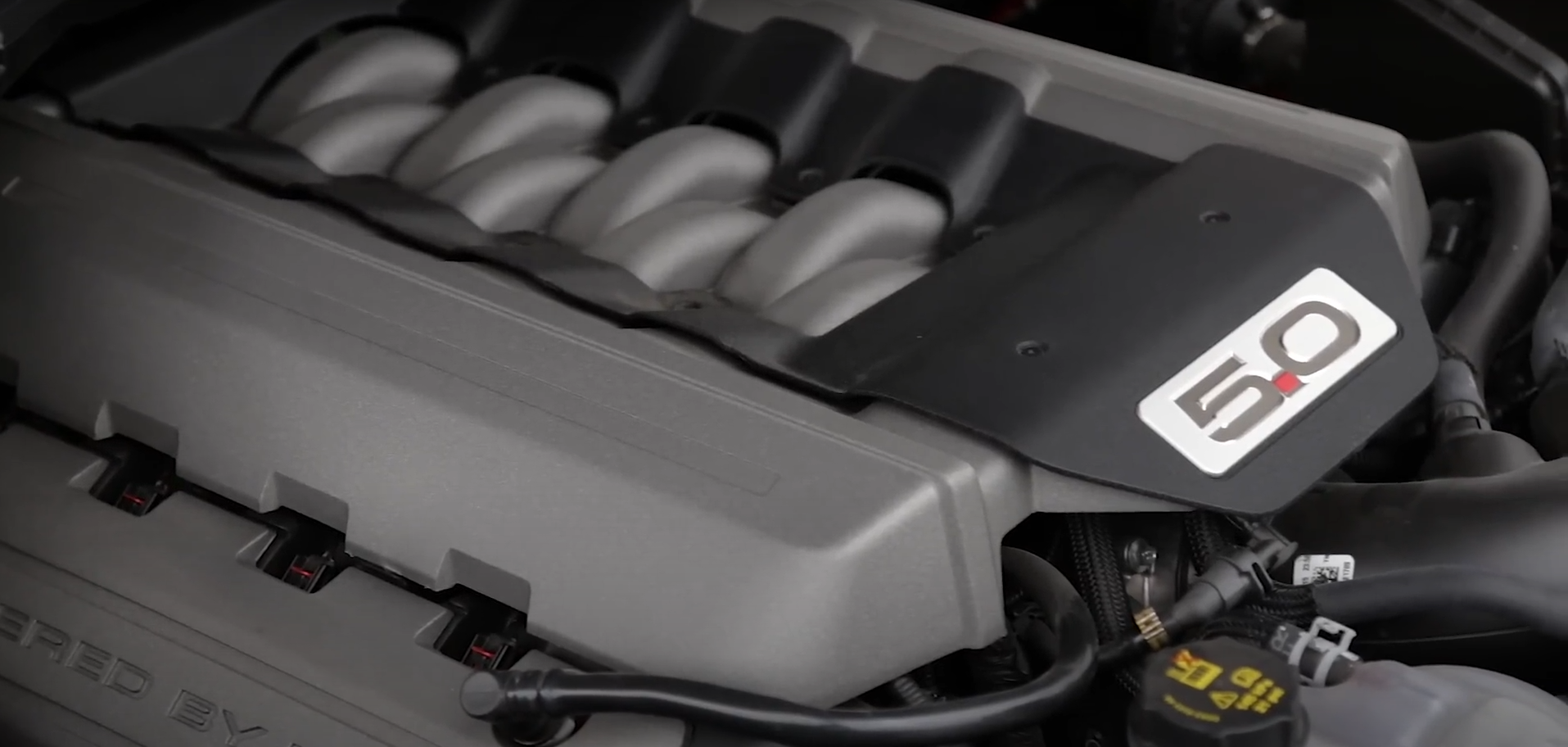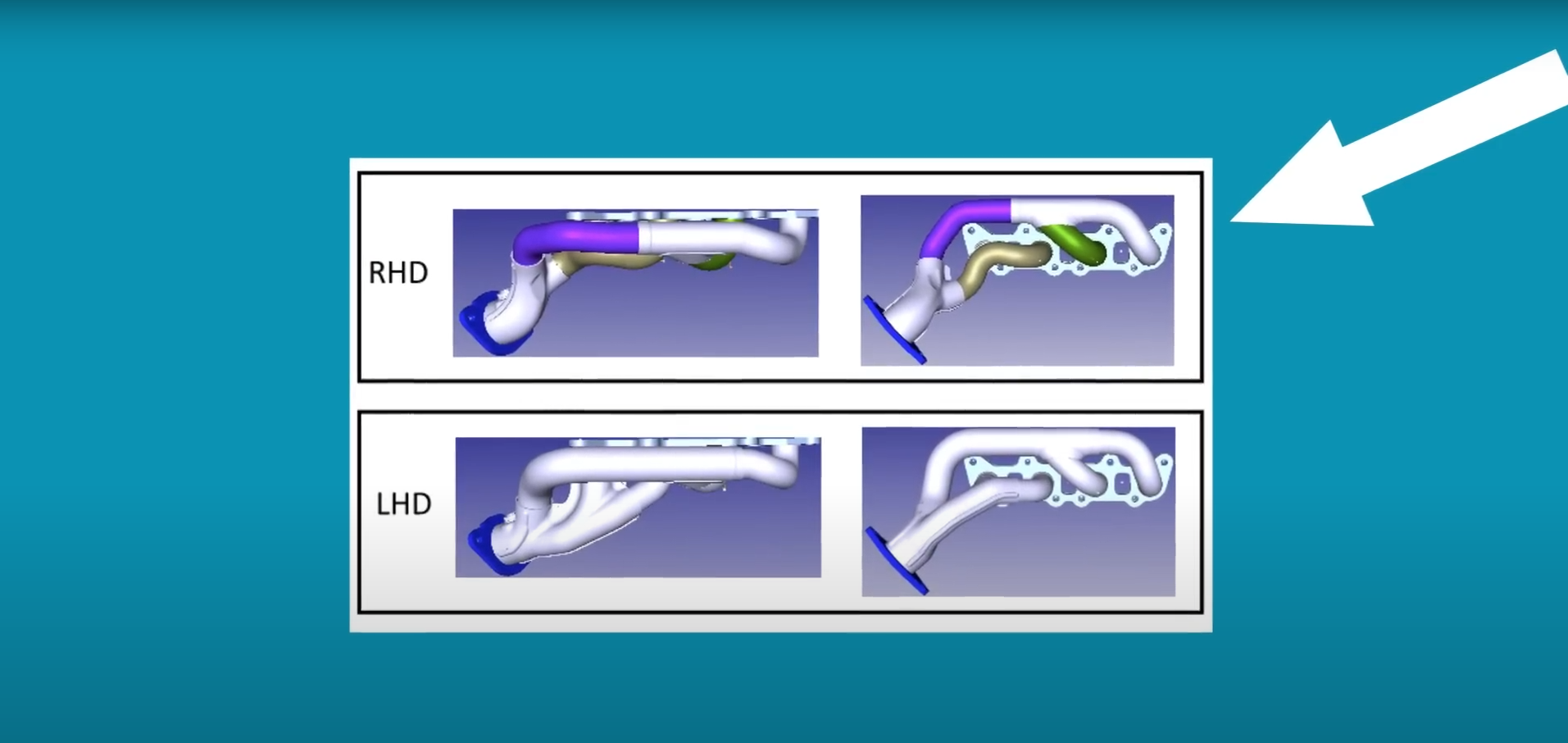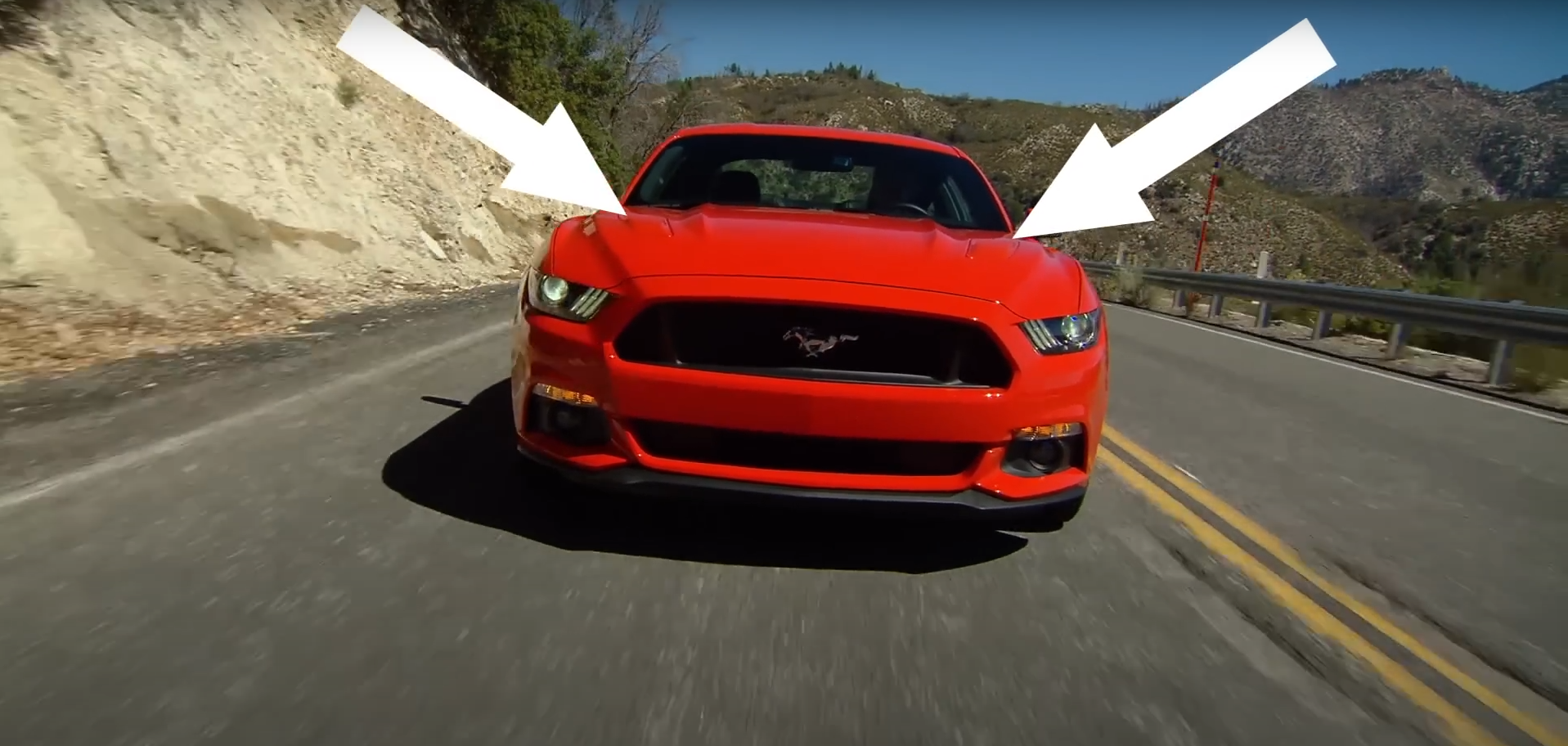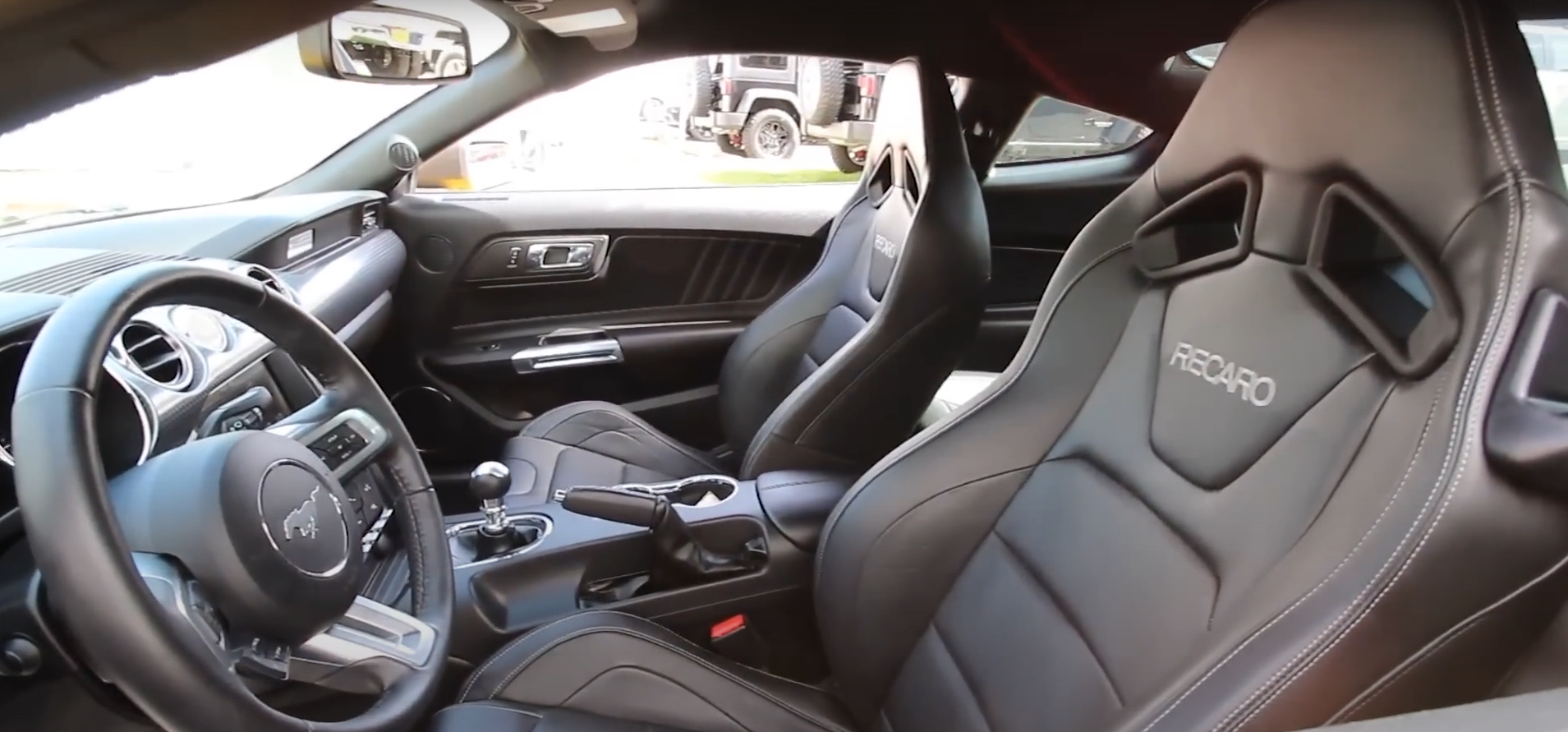When comparing the Ford Mustang in the United States and Europe, it is easy to spot several differences in both appearance and performance. These changes often result from unique regulations, local preferences, and technical adjustments for each market.
From the shape of the mirrors to the engine choices available, the Mustang has been adapted in several ways. Some features found on US models are missing or changed for European versions, showing how one car can be tailored for different regions.
Key Takeaways
- Design and feature changes are made to meet regional requirements.
- Performance and engine options vary between US and European models.
- Pricing and consumer choices are influenced by local market factors.
Differences in Outside Appearance
Engine Cover Air Outlets and Look
US Mustangs have bold hood vents that give the car a more aggressive presence. These vents are missing from the European versions because of local safety rules for pedestrians. While this means the European model looks slightly plainer up front, it does come with a better radiator as standard to help with cooling.
Rear Lamp and Signal Arrangement
The back lights set the two models apart. European Mustangs use clear tail lights with amber turn signals that flash in one bar. There are also orange secondary indicators. In contrast, US Mustangs have red tail lamp bars, and their turn indicators work in a sequential pattern. US models have red secondary indicators instead of orange.
The difference is easy to spot:
| Feature | US Model | European Model |
|---|---|---|
| Tail Light Color | Red | Clear |
| Turn Signal Color | Red/Sequential | Amber/One Bar |
| Secondary Indicator Color | Red | Orange |
Front Light Setup
The design of the headlights is different between the two. In Europe, the headlights are made to fit EU rules and do not use the “tri-bar” lamps as daytime running lights. Instead, daytime lights come from the fog lamps. The three bars you see in the European headlight units are only reflectors and do not light up. This gives the US Mustang a distinct lighting pattern that is not present on the European model.
Engine Types and Performance Details
V8 Engine Differences
The V8 Mustang sold in the US gives more horsepower and torque than the version in Europe. In the US, it reaches 435 horsepower and 400 lb-ft of torque. In the UK, due to steering design and exhaust changes from the right-hand drive setup, the V8 is limited to 410 horsepower and 391 lb-ft of torque.
Final Drive Ratios:
| Market | Available Ratios | Note |
|---|---|---|
| US | 3.55:1, 3.73:1 | 3.73:1 offers better acceleration |
| Europe | 3.55:1 only | No 3.73:1 ratio option |
The 3.73:1 available in America allows for quicker acceleration, while Europe’s 3.55:1 ratio means a slightly higher possible top speed if the limiter is removed.
No V6 Option for Europe
In the European market, buyers do not get a V6 Mustang option. This engine is less powerful, with 300 horsepower, and less fuel efficient than the 2.3-liter EcoBoost. Given high fuel prices in Europe, there is little demand for the V6.
EcoBoost Engine Choice and Fuel Use
The 2.3-liter EcoBoost engine is a popular choice because it balances power and fuel efficiency. It produces 314 horsepower and uses much less fuel than the V6.
In Europe, 68% of new Mustang buyers pick the V8, while 32% choose the EcoBoost. In the US, the V8 is chosen by 40% of buyers, the EcoBoost by 34%, and the V6 by 20%.
Mustang Engine Preferences by Market:
| Engine | US Buyers (%) | Europe Buyers (%) |
|---|---|---|
| V8 | 40 | 68 |
| EcoBoost | 34 | 32 |
| V6 | 20 | 0 |
Figures may not sum to 100% due to rounding or special models like GT350 in the US.
The 2.3 EcoBoost keeps running costs lower, especially where gas costs much more per gallon.
Powertrain and Key Engineering Details
Gear Ratio Choices
European Mustang V8 models only come with a 3.55:1 final drive gear. In comparison, buyers in the United States can choose a 3.73:1 Torsen limited-slip rear axle as part of the performance package. This difference gives the US version slightly quicker acceleration off the line.
| Model | Standard Gear Ratio | Optional Gear Ratio |
|---|---|---|
| Europe V8 Mustang | 3.55:1 | None |
| US V8 Mustang | 3.55:1 | 3.73:1 (Performance) |
With the 3.73:1 ratio, the car reaches 60 mph right at the top of second gear. This can make shifting to third gear at high speeds more difficult without hitting the rev limiter. In terms of potential top speed, the 3.55:1 car has a slight edge—180 mph versus 178 mph for the 3.73:1.
Distinctions in Performance Packages
European Mustangs come with their performance package improvements as standard. One reason for this is to match some of the cooling abilities found on higher-trim American models. However, the US cars offer more choices for those who want to prioritize either daily comfort or added capability on the track.
- US buyers can select the performance package with additional upgrades, including the 3.73:1 gear ratio.
- In Europe, there is less flexibility, as performance features come built-in.
Cooling System Improvements
European Mustangs are fitted with an upgraded radiator compared to the US base version. This helps handle temperature increases and supports spirited driving. The US base model does not include this enhanced radiator unless the performance package is selected.
Key points about European radiator setup:
- Comes standard for better cooling
- Helps manage heat during aggressive driving
US versions:
- Base models have a more basic radiator setup
- Performance package models get the upgraded unit
This makes the Euro-spec cars better prepared for demanding conditions straight from the showroom.
Differences Based on Regional Requirements
Steering Wheel Placement Constraints
Mustangs sold in right-hand drive markets like the United Kingdom have unique limits due to the steering wheel conversion. In these versions, the V8 exhaust manifold needs to fit around the steering shaft, resulting in a smaller pipe diameter and extra bends. This change reduces engine power by 25 horsepower and 9 pound-feet of torque compared to the left-hand drive models.
| Market | Horsepower | Torque (lb-ft) |
|---|---|---|
| Right-Hand Drive | 410 | 391 |
| Left-Hand Drive | 435 | 400 |
Choices for Specialty Seating
Buyers in left-hand drive regions, such as the United States and Germany, have the choice to install specialized sport seats. These seats, known for their extra support and design, are not available in right-hand drive cars like those in the UK due to engineering and approval costs.
Seat Option Availability
- Left-Hand Drive: Sport seat option offered
- Right-Hand Drive: Sport seat option not offered
Wing Mirror Shape and Size Laws
Mirror shapes differ between the US and European Mustangs. European models feature larger and more triangular power-folding side mirrors to meet local safety policies. In contrast, the US versions come with slimmer, more streamlined mirrors since their standards are different.
Key Differences:
- European mirrors: bigger, more triangular, power-foldable, heated
- US mirrors: thinner, sleeker design
Pricing and Where to Buy
Price Differences in the US and Europe
The Ford Mustang costs much less in the United States compared to Europe. In the US, a V8 Mustang is priced about the same as a Ford Focus ST in Europe. In the United Kingdom, the Mustang can be almost £11,000 more, bringing the price to nearly £36,000 (about $47,000).
| Location | Price for V8 Mustang | Comparable Model (Europe) |
|---|---|---|
| United States | Similar to US Focus ST | — |
| Europe (UK) | Around £36,000 ($47,000) | Ford Focus ST |
Fuel costs are also higher in Europe. Drivers there pay about $7 per gallon, roughly three times what people in the US pay.
How They Are Built and Sold
Mustangs for the US market are built at Ford’s Flat Rock factory in Michigan. These cars can be sold locally without extra costs for shipping or changes to meet European rules.
Cars made for Europe need special features. For example, European laws require changes to mirrors and lights. The cars are also imported, which adds to the cost. Right-hand drive models, like those sold in the UK, do not offer certain seat options because making them for just a small group of buyers would raise costs even more.
What Buyers Want
Favorites Among Engine Types
In Europe, most Mustang buyers prefer the V8 engine. About 70% chose the V8 when the model launched in the UK, while only 30% decided on the EcoBoost engine. A year later, these numbers remained nearly the same, with 68% sticking with the V8 and 32% for the EcoBoost.
In the United States, the choices are more divided. Only 40% of US buyers went for the V8. 34% picked the EcoBoost, 20% chose the V6, and about 6% bought the GT350.
| Region | V8 (%) | EcoBoost (%) | V6 (%) | GT350 (%) |
|---|---|---|---|---|
| United Kingdom | 68 | 32 | — | — |
| United States | 40 | 34 | 20 | 6 |
Comparing EcoBoost and V8 Demand
The V8 is much more popular in Europe than in the US. This may be because the V8 is seen as more special with its power and muscle car status. The EcoBoost is more popular in America than in Europe, but still not the first choice.
European buyers do not seem very interested in the V6. In the US, there is more variety, and some buyers pick the V6 for its balance between price and performance.
Key facts:
- The V8 is the top pick in Europe.
- The EcoBoost is a budget-friendly choice, but not as common in Europe.
- US buyers spread their choices more evenly among engine types.


